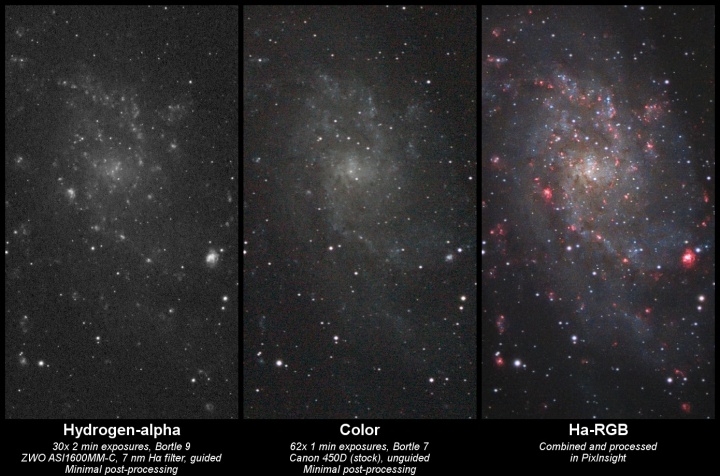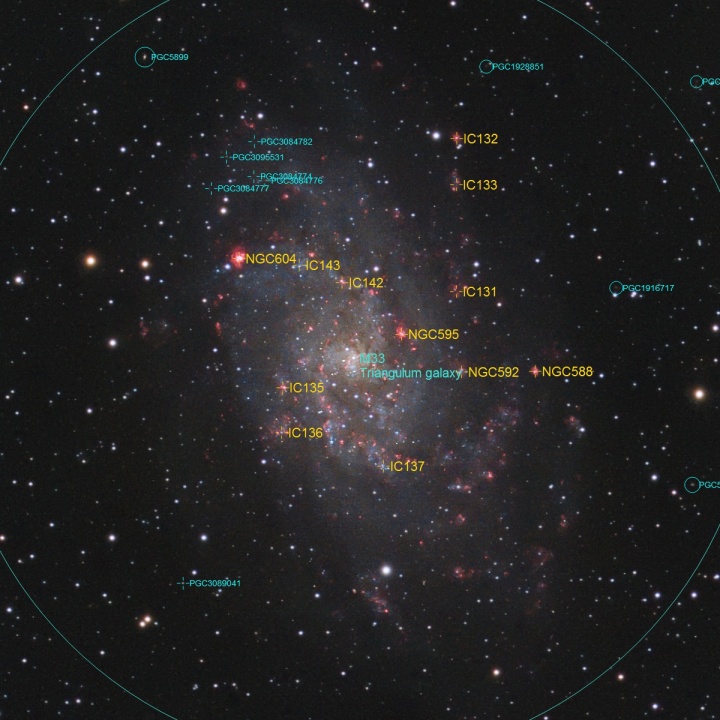This is the third time that I’ve pointed my telescope to Messier 33, a magnificent spiral galaxy in the constellation Triangulum and one of the largest members of our Local Group.
My previous images were shot with a standaard Canon 450D DSLR camera, which is not very sensitive to the deep-red color emitted by ionized hydrogen gas. Consequently, the prominent hydrogen clouds in M33 were barely visible in these photographs. I really liked the look of the hydrogen clouds in my latest image of the Andromeda galaxy, so I decided to shoot M33 with a Hydrogen-alpha filter on my ASI1600MM camera this time to enhance the original color photo with red hydrogen signals.
Here’s a close-up comparison of the raw Hα and color data. These have only been stretched and color corrected. The combined image noise reduction, color saturation and contrast adjustments.

NGC 604 is the largest and brightest hydrogen region of M33. It was first cataloged as a very faint nebula, separate from M33, by the famous astronomer William Herschel in the 18th century. Later sky surveys identified many additional nebulae and star clusters inside the galaxy, which each received their own NGC or IC identification number. A couple very faint background galaxies (PGC numbers) are also visible in my image.

Technical details
Dates: 26 January 2018, 15 November 2018
Telescope: Teleskop-Service 80 mm f/6 FPL-53 triplet APO
Corrector: 2″ TS 0.79X reducer/flattener and Baader 2″ UV/IR filter
Cameras: Canon 450D, ZWO ASI1600MM-C with EFW-8 and ZWO 31mm filters
Mount: Skywatcher EQ5 Pro
Accessories: ASToptics dew straps, Omegon 2 Channel dew controller
Power: Tracer 16 Ah + 7 Ah 12V LiFePO4 batteries
Exposure: 2.0 hours
450D: 62 x 60 sec, ISO-800
Ha 7 nm: 31 x 120 sec (gain: 200, bin 1×1, -15C)
Software: APT, PHD2, EQMOD, PixInsight



